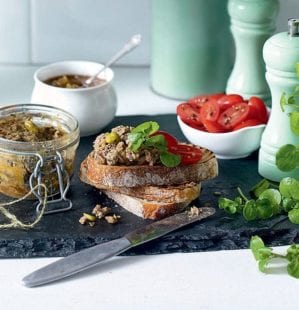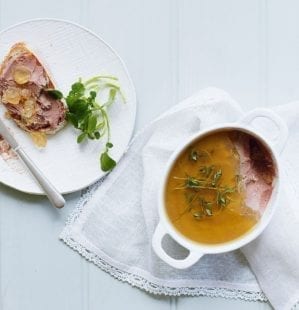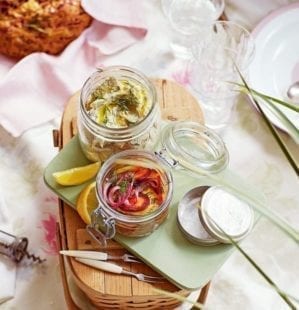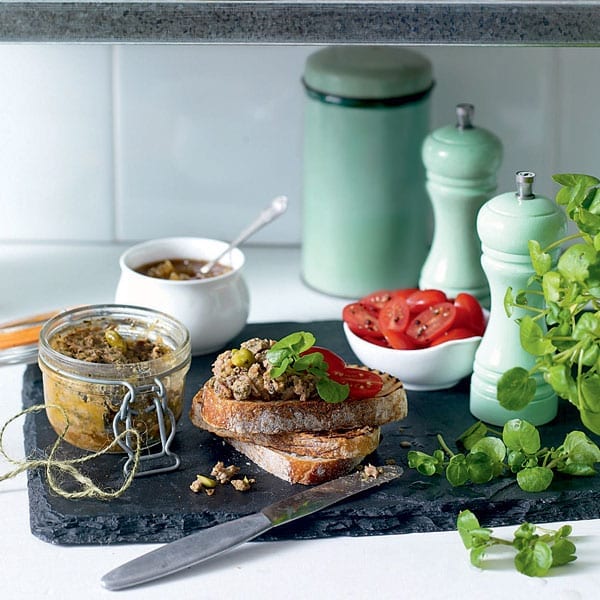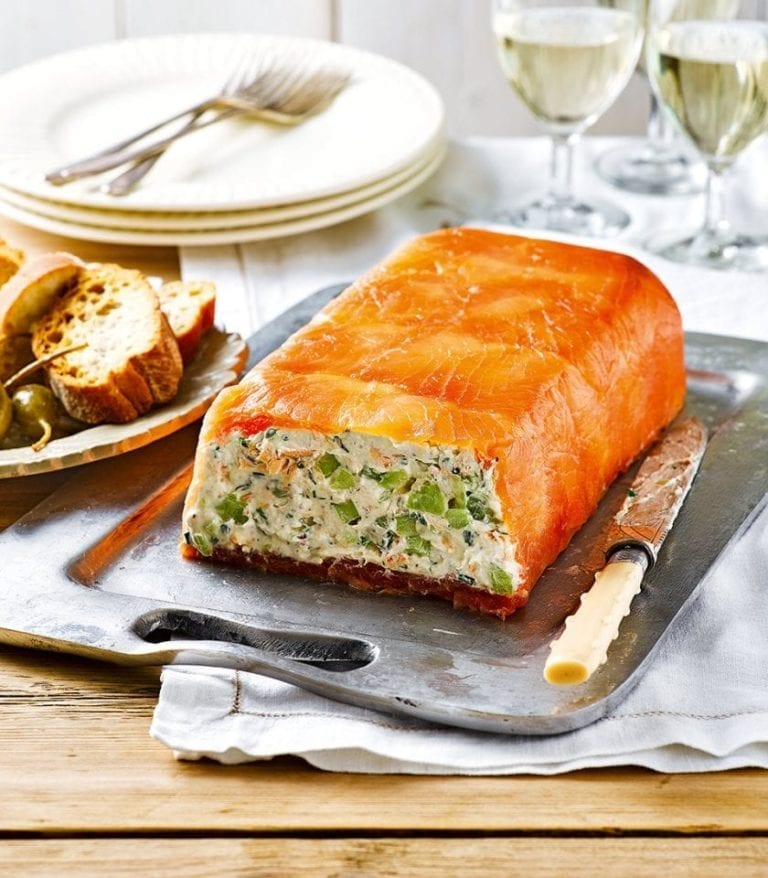How to make chicken liver parfait
Award-winning chef Chris Galvin shares his step-by-step guide for the ultimate starter and shares tips on how to make chicken liver parfait.
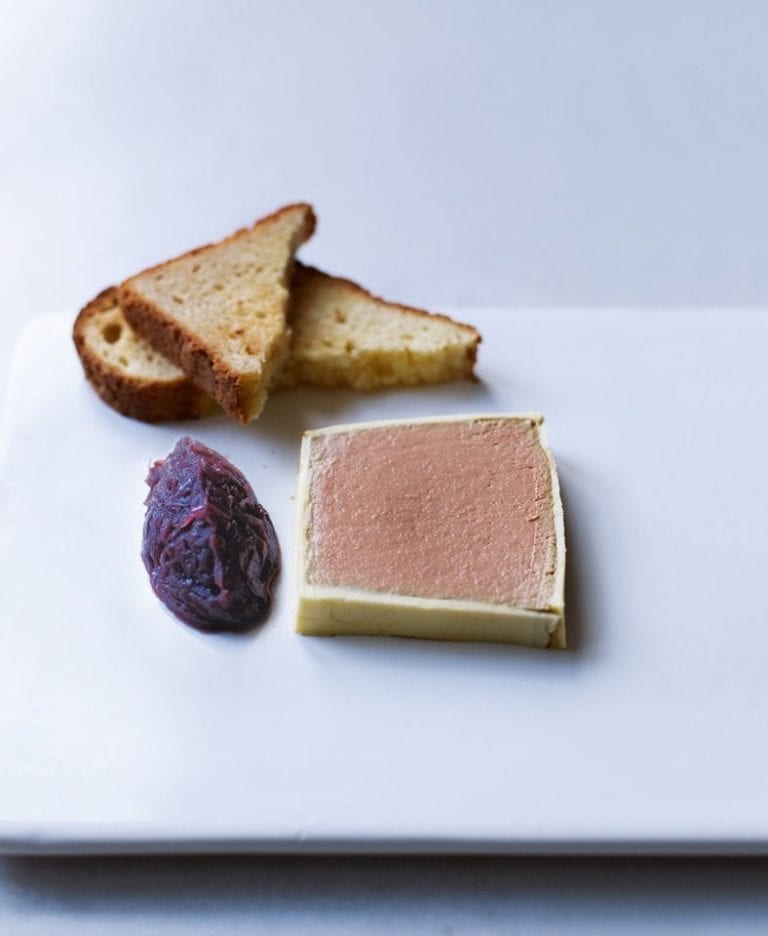
You will need
- 500g unsalted butter, plus an extra knob for frying
- 4 small shallots, finely diced
- ½ garlic clove, finely chopped
- 1 fresh thyme sprig
- ½ bay leaf
- 100ml madeira
- 100ml port
- 10ml brandy
- 500g free-range chicken livers, cleaned and trimmed
- 12g fine sea salt
- 6g sea salt flakes (about ½ tbsp; Chris likes to use pink salt, available from health food stores and larger supermarkets)
- 3g ground white pepper (about ½ tsp)
- 4 medium free-range eggs, at room temperature (see Chris’s tips)
To cover
- 200g very soft butter (the consistency of soft margarine) mixed with a drizzle of light olive oil (see Chris’s tips)
This recipe serves 16 people. Marinating time 24 hours, hands-on time 45 min, simmering time 1¾-2 hours, plus bringing to room temperature and overnight chilling time.
Make ahead
- You can store the parfait in the fridge, completely covered in the butter mixture, for up to 4 days.
Food team’s tip
- The butter coating gives the parfait a classic look, but if you want a more rustic appearance or you’re worried about turning it out successfully, pour some melted and slightly cooled butter over the top of the parfait while in the terrine, then chill until hard. Scoop servings straight from the terrine.
Chris’s tips for success
Temperature
The silky texture of this parfait is partly achieved by making sure all the ingredients are at a similar temperature when they’re whizzed together in the food processor (step 4). If your eggs are fridge-cold, steep them in a bowl of lukewarm water for 10 minutes to warm them up, and make sure the chicken livers have had at least 40 minutes out of the fridge somewhere warm first.
Speed
This method is relatively simple, but you need to work quite quickly. As soon as the melted butter is added to the livers it starts to solidify, so to prevent the mixture from separating you need to get it from food processor to terrine as quickly as possible. It’s also best not to work in a kitchen that’s too cold.
Preparation
To help speed things up, have everything ready to go (the roasting tin with the towel in it, the kettle boiled, the strip of baking paper cut to fit on top…) before you start whizzing the livers. Line everything up on the counter in the order it will be used – that way you can just work along the line.
Magic ingredient
The olive oil mixed with the butter to coat keeps the parfait supple and smooth inside, and gives it a glossy exterior.
Protection
The tea towel in the roasting tin protects the bottom of the parfait from direct heat. The layers of foil, cling film and baking paper on top of the parfait do the same and prevent steam from getting to it.
Freshness
Once sliced, the parfait will quickly lose its pinkish colour as exposure to air oxidises the chicken livers. If you’re not serving it all at once, press a piece of cling film directly onto the cut side of the parfait to protect and preserve it.
1. Melt a knob of butter in a saucepan over a medium heat. Fry the shallots, garlic, thyme and bay leaf for 7 minutes until soft but not coloured. Pour in the madeira, port and brandy, then turn the heat up and simmer until the liquid has reduced to about 4 tbsp. Cool.
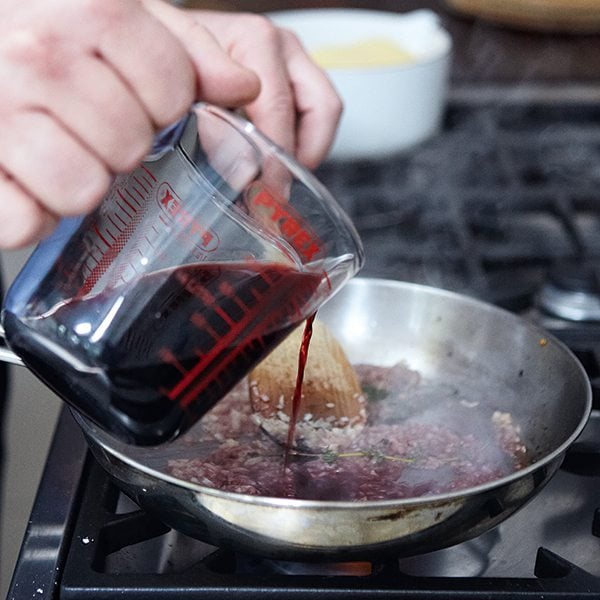
2. Mix the livers in a bowl with the cooled alcohol mixture, the salts and the white pepper, then cover and marinate in the fridge for 24 hours.
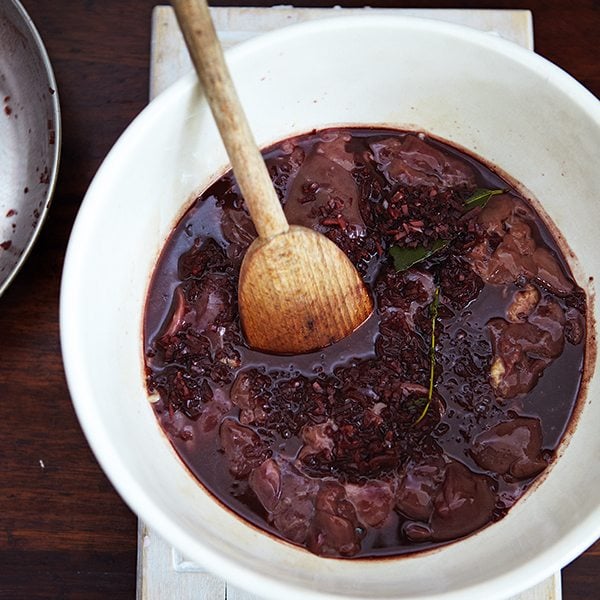
3. Remove the marinated livers from the fridge and leave them to come up to room temperature (this will take about 40 minutes; see Chris’s tips). Melt the 500g butter in a saucepan, then take off the heat and leave to cool slightly.
4. Preheat the oven to 120°C/fan100°C/gas ½ and put a clean tea towel, folded in half, in the bottom of a deep roasting tin. Remove the bay leaf from the chicken livers, then whizz the mixture in a food processor until smooth. With the motor running, add the eggs, one at a time, then pour in the melted butter.
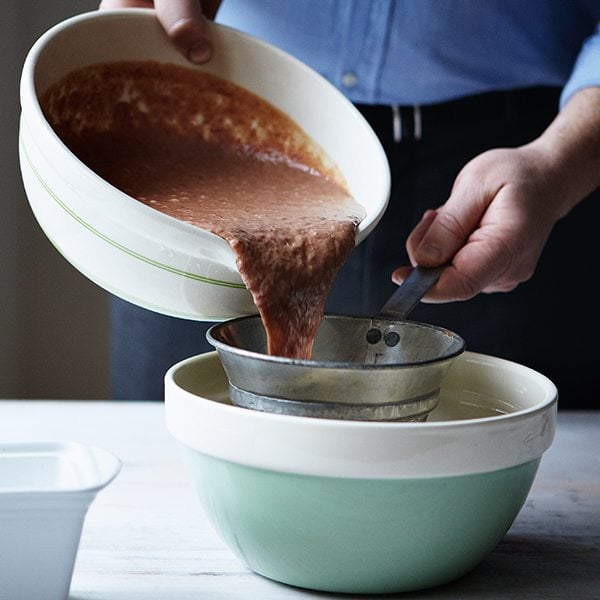
Once the mixture is smooth, work quickly to pass the mixture through a fine sieve.
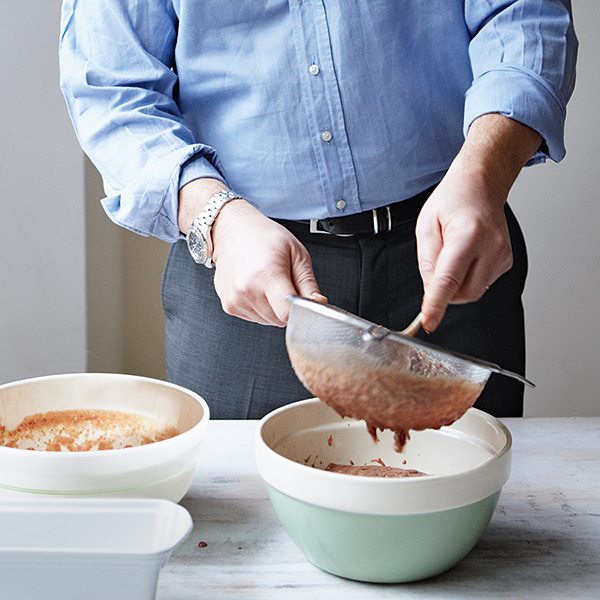
Pour it into a 28cm x 7cm x 8.5cm deep terrine (we used a Le Creuset terrine).
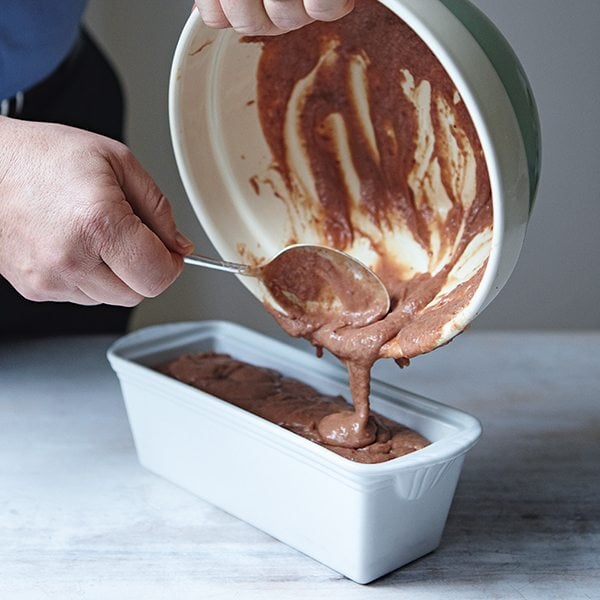
5. Put the terrine on top of the tea towel in the roasting tin. Pour boiling water into the tin to halfway up the sides of the terrine (this is a bain marie). Quickly and lightly press a rectangle of baking paper on top of the mixture (to stop it rising as it cooks). Cover the top of the terrine with a layer of cling film, then foil – neither should trail in the water.
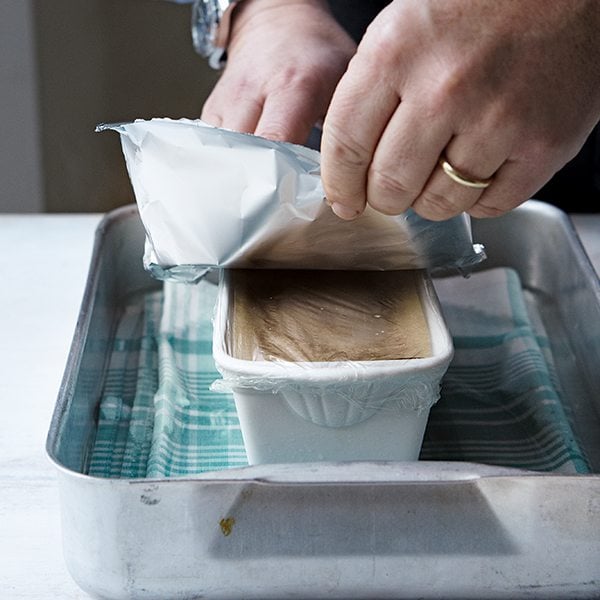
6. Put the roasting tin straight in the oven and cook for 1¾-2 hours until the terrine has a nice wobble and a digital thermometer pushed into the centre reads between 60°C-65°C (we recommend Thermapen). Remove the terrine from the oven. Leave to cool, then chill in the fridge overnight. (Don’t worry if it seems very wobbly when it comes out of the oven – the butter will solidify on cooling and the whole thing will firm up.)
7. The next day, spread a thin layer of the butter and oil mixture over the top of the parfait, then return to the fridge for the butter to harden (about 20-30 minutes). To turn out, run a hot, dry knife around the inside edges of the terrine. Briefly dip the terrine in a sink filled with hot water, then invert onto a board so the butter is at the bottom. If it won’t budge, keep running the hot knife around the edges of the parfait and give it a good shake when inverted to try to loosen the vacuum. Or run a chef’s blowtorch around the outside of the terrine to loosen the parfait.
8. Once out of the terrine, gently smooth the edges of the parfait and sharpen the corners with a small round-bladed knife. Return the parfait to the fridge for 20 minutes (or the freezer for 10 minutes) to harden, then remove and cover the remaining sides with a thin layer of the butter mixture, working quickly.
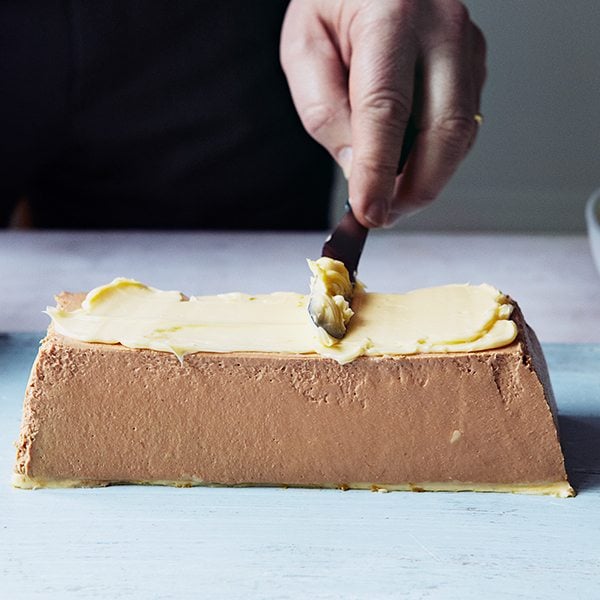
9. Return to the fridge for another 10-15 minutes, then slice with a hot, dry knife. Serve with toasted brioche and chutney.
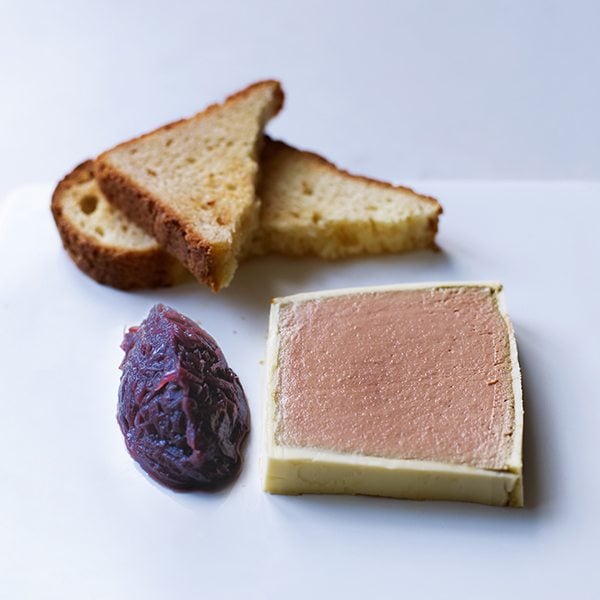
Subscribe to our magazine
Food stories, skills and tested recipes, straight to your door... Enjoy 5 issues for just £5 with our special introductory offer.
Subscribe
Unleash your inner chef
Looking for inspiration? Receive the latest recipes with our newsletter
